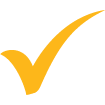SMARTool & Characteristics Alignments
SMARTool Alignment | Characteristics Alignment | Download Tool
SMARTool Alignment for ETR’s Risk Avoidance Programs
Hover over the check marks for more information. Click on the program title to download a detailed alignment document.
Program Logic Models can be found on the individual program pages under the Research tab.
| Part II: Curriculum | PHAT–AO | MAD | HealthSmart Middle School Abstinence |
HealthSmart High School Abstinence |
| Target #1: Enhance the knowledge of (a) physical development, sexual risks, and (b) healthy relationships |  |
 |
 |
 |
| Target #2: Support personal attitudes and beliefs that value sexual risk avoidance |  |
 |
 |
 |
| Target #3: Acknowledge and address common rationalizations for sexual involvement |  |
 |
 |
 |
| Target #4: Improve perception of and independence from negative peer and social norms |  |
 |
 |
 |
| Target #5: Build personal competencies and self-efficacy to avoid sexual activity |  |
 |
 |
 |
| Target #6: Strengthen personal intention and commitment to avoid sexual involvement |  |
 |
 |
 |
| Target #7: Identify and reduce the opportunities for sexual involvement |  |
 |
 |
 |
| Target #8: Strengthen future goals and opportunities |  |
 |
 |
 |
| Target #9: Partner with parents |  |
 |
 |
 |
Tool to Assess Characteristics Alignment for ETR’s Risk Reduction Programs
Hover over the check marks for more information. Click on the program title to download a detailed alignment document.
ETR's Tool to Assess the Characteristics of Effective Sex and STD/HIV Education Programs is free for anyone to use to assess programs being considered for implementation. You do not need to request permission from ETR to use the tool, and can download it for free at the link below.
Program Logic Models can be found on the individual program pages under the Research tab.
| Categories 1 & 2 Characteristics |
All4You | All4You2 | BPBR | Draw the Line | Get Real | HealthSmart Middle School HIV/STD |
| 1. Involved multiple people with different backgrounds in theory, research and sex and STD/HIV education to develop the curriculum. |  |
 |
 |
 |
 |
 |
| 2. Assessed relevant needs and assets of target group. |  |
 |
 |
 |
 |
 |
| 3. Used a logic model approach to develop the curriculum that specified the health goals, the behaviors affecting those health goals, the risk and protective factors affecting those behaviors, and the activities addressing those risk and protective factors. |  |
 |
 |
 |
 |
 |
| 4. Designed activities consistent with community values and available resources. |  |
 |
 |
 |
 |
 |
| 5. Pilot-tested the program. |  |
 |
 |
 |
 |
 |
| 6. Focused on clear health goals — the prevention of STD/HIV and/or pregnancy. |  |
 |
 |
 |
 |
 |
| 7. Focused narrowly on specific behaviors leading to these health goals, gave clear messages about these behaviors, and addressed situations that might lead to them and how to avoid them. |  |
 |
 |
 |
 |
 |
| 8. Addressed multiple sexual psychosocial risk and protective factors affecting sexual behaviors. |  |
 |
 |
 |
 |
 |
| 9. Created a safe social environment for youth to participate. |  |
 |
 |
 |
 |
 |
| 10. Included multiple activities to change each of the targeted risk and protective factors. |  |
 |
 |
 |
 |
 |
| 11. Employed instructionally sound teaching methods that actively involved the participants, that helped participants personalize the information, and that were designed to change each group of risk and protective factors. |  |
 |
 |
 |
 |
 |
| 12. Employed activities, instructional methods and behavioral messages that were appropriate to the youths’ culture, developmental age and sexual experience. |  |
 |
 |
 |
 |
 |
| 13. Covered topics in a logical sequence. |  |
 |
 |
 |
 |
 |
| Categories 1 & 2 Characteristics |
HealthSmart High School HIV/STD |
MPC | PHAT-Comprehensive | RTR | Safer Choices | Sisters Saving Sisters |
| 1. Involved multiple people with different backgrounds in theory, research and sex and STD/HIV education to develop the curriculum. |  |
 |
 |
 |
 |
 |
| 2. Assessed relevant needs and assets of target group. |  |
 |
 |
 |
 |
 |
| 3. Used a logic model approach to develop the curriculum that specified the health goals, the behaviors affecting those health goals, the risk and protective factors affecting those behaviors, and the activities addressing those risk and protective factors. |  |
 |
 |
 |
 |
 |
| 4. Designed activities consistent with community values and available resources. |  |
 |
 |
 |
 |
 |
| 5. Pilot-tested the program. |  |
 |
 |
 |
 |
 |
| 6. Focused on clear health goals — the prevention of STD/HIV and/or pregnancy. |  |
 |
 |
 |
 |
 |
| 7. Focused narrowly on specific behaviors leading to these health goals, gave clear messages about these behaviors, and addressed situations that might lead to them and how to avoid them. |  |
 |
 |
 |
 |
 |
| 8. Addressed multiple sexual psychosocial risk and protective factors affecting sexual behaviors. |  |
 |
 |
 |
 |
 |
| 9. Created a safe social environment for youth to participate. |  |
 |
 |
 |
 |
 |
| 10. Included multiple activities to change each of the targeted risk and protective factors. |  |
 |
 |
 |
 |
 |
| 11. Employed instructionally sound teaching methods that actively involved the participants, that helped participants personalize the information, and that were designed to change each group of risk and protective factors. |  |
 |
 |
 |
 |
 |
| 12. Employed activities, instructional methods and behavioral messages that were appropriate to the youths’ culture, developmental age and sexual experience. |  |
 |
 |
 |
 |
 |
| 13. Covered topics in a logical sequence. |  |
 |
 |
 |
 |
 |
| Category 3 Characteristics |
Applies to All Programs |
| 14. Secured at least minimal support from appropriate authorities such as ministries of health, school districts or community organizations. | This characteristic would be addressed during program implementation by the project team. |
| 15. Selected educators with desired characteristics (whenever possible), trained them and provided monitoring, supervision and support. | This characteristic would be addressed during program implementation by the project team. ETR offers training on all of our sexual health programs through our Professional Learning Services. For more information visit our Training and TA pages. |
| 16. If needed, implemented activities to recruit and retain youth and overcome barriers to their involvement (e.g., publicized the program, offered food or obtained consent). | This characteristic would be addressed during program implementation by the project team. |
|
17. Implemented virtually all activities with reasonable fidelity. |
ETR offers Fidelity Logs for our programs, see the Adaptation Guidelines and Tools tab on the individual program pages. |
